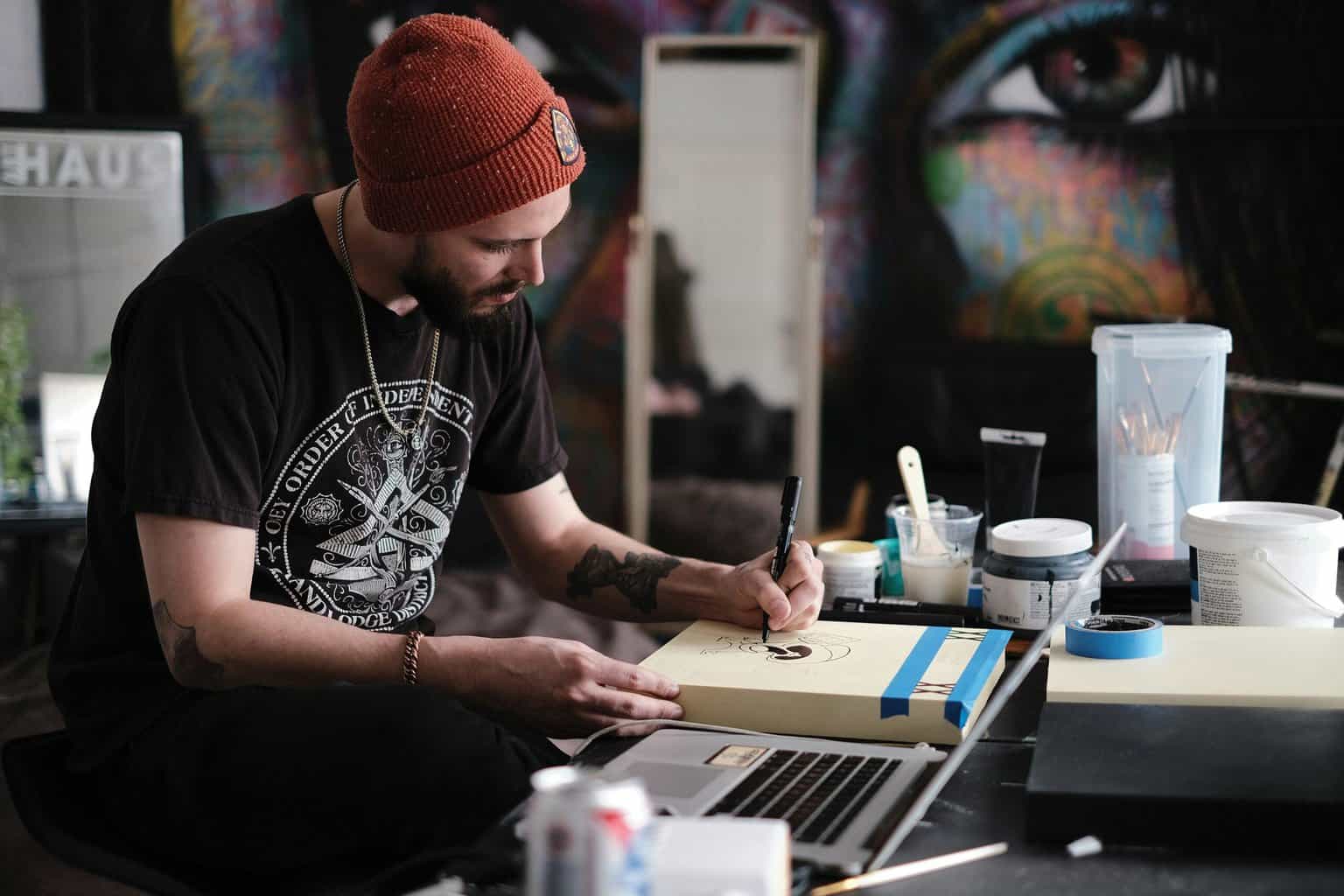An artist statement is a bridge between the artist and the audience.
Without it, people are left guessing, trying to piece together meaning on their own.
But with the right words, that connection becomes clearer and more intentional.
Writing one, though? That’s another story.
Even artists who pour their emotions into their work can struggle to put it all into words.
That’s exactly what this guide is all about. It’ll show you the steps to writing an artist statement and provide some artist statement examples that apply those steps.
Let’s first get a clear understanding of what an artist statement is.
What Is an Artist Statement?
An artist statement is a short yet thoughtful piece of writing that explains what you create and why you create it.
It includes a few sentences that put your ideas, themes, and motivations behind your work into words.
By doing so, it helps bridge the gap between your artwork’s idea and the viewer’s experience.
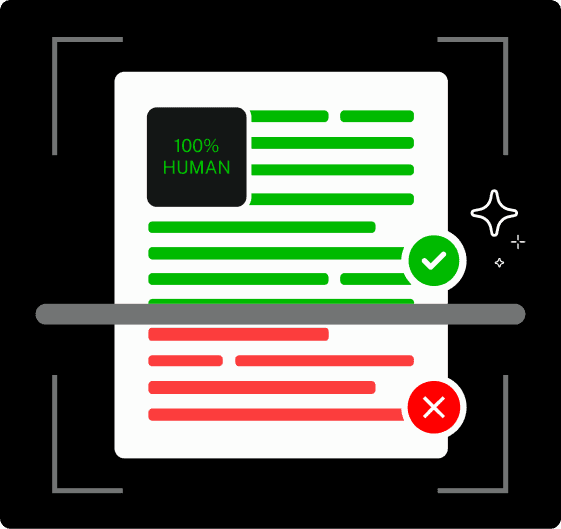
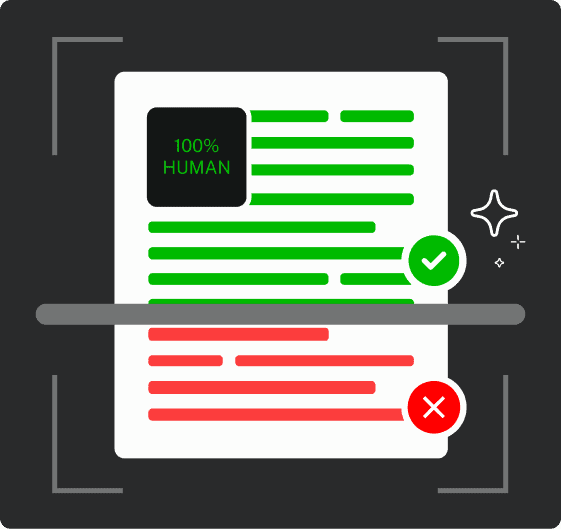
Never Worry About AI Detecting Your Texts Again. Undetectable AI Can Help You:
- Make your AI assisted writing appear human-like.
- Bypass all major AI detection tools with just one click.
- Use AI safely and confidently in school and work.
That’s why an artist statement can be explained as a bit of context without dictating exactly how someone should interpret your art.
The statement has to stand on its own.
It should be clear and informative while staying true to your artistic practice.
So you shouldn’t think about impressing people with complex language or grand theories.
If you’ve ever walked into a gallery and seen paragraphs next to artworks, those were artist statement examples.
But that’s just one type of it.
An artist statement can also be about a body of work and your career as a whole.
Artist statements usually show up in exhibition catalogs, on websites, in grant applications, and anywhere artists need to introduce their work to an audience.
Why Every Artist Needs a Strong Statement?
Every artist, no matter how established, can benefit from a solid artist statement.
First off, it gives clarity to the artists themselves.
Art is often an intuitive, nonverbal process, and putting your ideas into words forces you to step back and think critically about what you’re doing.
This process can lead to new insights and influence future work.
Moreover, a statement acts as a guide.
While your work should speak for itself, not every viewer comes with the background or context to fully grasp it.
That’s when they refer to this statement to guide their emotional response and relate to your art.
It also saves you from having to explain your work over and over.
How an Artist Statement Differs from a Bio or Resume
It’s easy to mix up an artist statement with an artist’s bio or resume, but they are entirely different things.
A bio and resume answer the “who” and “what” of your artistic career, respectively.
A bio tells people who you are, where you’re from, what your background is, and key milestones in your career. It’s like a professional introduction often written in the third person.
A resume is even more structured and focuses on your credentials and achievements.
Most of it is in bullet-point format.
The artist statement, on the other hand, focuses on the “why” and “how” of your art.
It is much more personal because it invites your audience into the process of making art.
Through it, you express in words, your creative philosophy, influences, and the ideas you’re exploring.
That’s why you should write it in the first person for it to properly capture your voice.
How to Write an Artist Statement
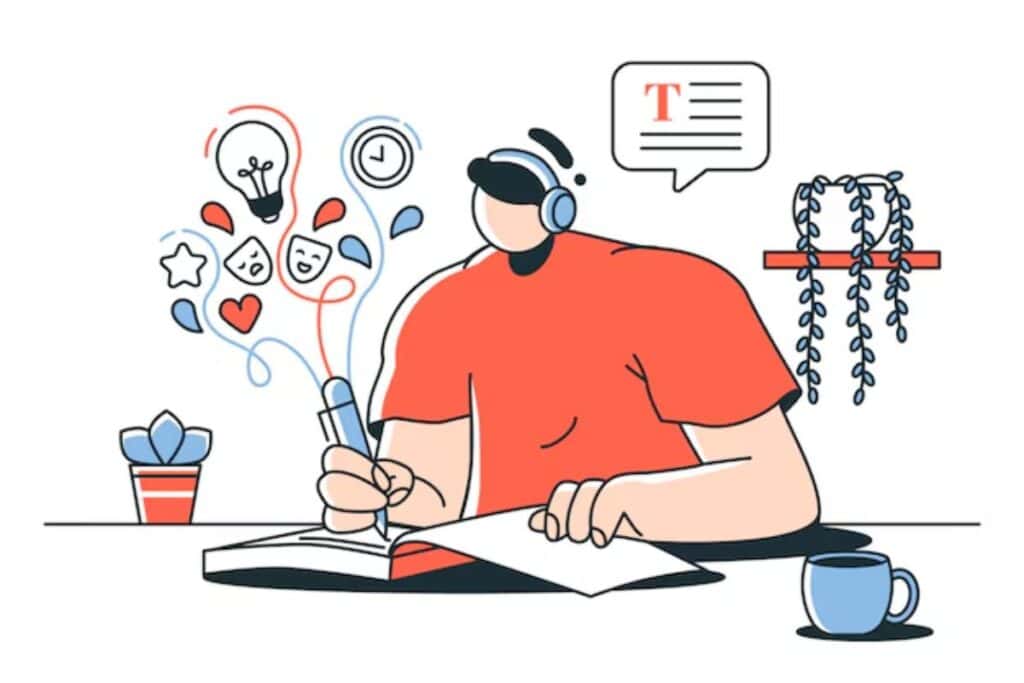
Staring at a blank page and trying to distill your entire artistic practice into a few sentences isn’t easy.
How do you put something so visual, so instinctual, into words?
Well, don’t think of it as some grand, definitive declaration.
A good artist statement doesn’t explain everything.
You just have to offer enough to deepen the viewer’s understanding without dictating their experience.
But how to do that practically?
Learn how to write an artist statement below before I introduce you to some artist statement examples.
Step 1: Define Your Artistic Vision and Message
Before you start penning down full sentences, take a step back and think about the bigger picture.
What drives your work? What are you exploring, questioning, or expressing?
If you’re struggling to articulate this, which you will, start with a brainstorming session. In fact, brainstorming should always be your starting point.
In this session, you should gather images of your work in one place.
Look for common themes, visual elements, and emotional undercurrents that tie them together.
Now jot down words and adjectives that you feel define your work. You’re not trying to write a statement yet, just gathering its basic ingredients.
Step 2: Describe Your Artistic Process
Once you have a sense of your artistic vision, shift focus to the “how.”
Your process is just as much a part of your story as the final piece.
The process description mainly addresses the following:
- What materials do you work with?
- Do you have a specific technique or approach that sets your work apart?
While you’re at it, be mindful of one thing. Instead of explaining every step, focus on what’s essential.
A long-winded technical breakdown can lose the reader’s interest.
Step 3: Communicate the Meaning Behind Your Work
This is where many artists hesitate.
The trick is to simply emphasize ideas, emotions, or conversations you want your work to spark.
Again, you don’t need to over-explain. Simply be direct.
And most importantly, be confident in your language. Your work doesn’t “try” to do something; it does it.
So, avoid filler words like “hopefully” or “attempts to.”
If your work challenges traditional narratives, say so. If it draws from personal memory, cultural history, or political critique, state it plainly.
Refer to the multiple artist statement examples of famous artists I’ve provided later on in the article.
Step 4: Keep It Clear, Concise, and Authentic
How long should an artist statement be? Shorter than you think.
Somewhere between 100 and 300 words is ideal. In terms of page numbers, one full page at max. Anything longer, and you’re going off track.
Here, you can use Undetectable AI’s word counter to get the word, sentence, and paragraph count of your statement as well as an idea of how many pages it takes.
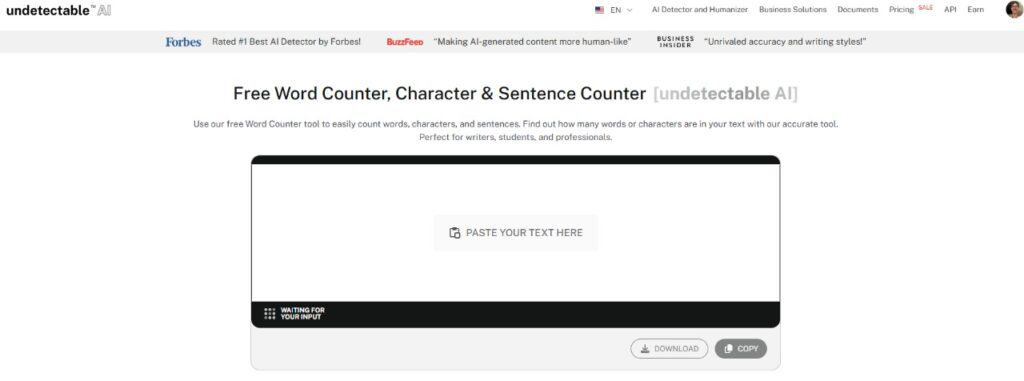
If it exceeds the recommended length, make it clearer, and more concise. An AI Essay Writer can help refine your statement by simplifying complex ideas while maintaining clarity.
Also, avoid art jargon or overly poetic language that obscures rather than clarifies.
Our how to shorten an essay guide can be helpful here.
Lastly, besides the statement’s full word count, make sure your sentences are also the right length.
Try to avoid fragmented sentences.
Step 5: Edit, Refine, and Get Feedback
No matter how confident you are in your writing, your first draft is seldom your final draft.
Finalizing it requires multiple rounds of proofreading and editing.
Read it aloud and note if it flows naturally or do you stumble over certain phrases.
Cut anything that feels redundant or overly complicated.
Read our guide on copy editing to correctly perform this step.
Step away for a day or two, then revisit with fresh eyes. Better yet, have others read it.
A mix of artist friends and non-artists can give you a balanced perspective.
Be open to feedback, but trust your instincts.
At the end of the day, this statement should feel true to you because no one can tell your story better than you can.
You can also try our AI Detector and Humanizer right in the widget below!
Artist Statement Examples & Templates
The best way to explain artist statement or just about any concept is by showing real-life examples of it.
So, here are a few real artist statement examples, that too by famous artists.
1. Rebellious Slave – Michelangelo Buonarroti
“The pre-homoeroticized body forms both my field of action and the basis of my conceptual taxonomy. My sculptures explore both the flux of transfixable signifiers and their complimentary anecdotal formations. My choice of Carrara marble as a medium creates a dialectic between proto-Classical conceptions of idealized form and later Humanistic naturalism. Each figure’s physical struggle is simultaneously inoperative and adjectival.” (source)
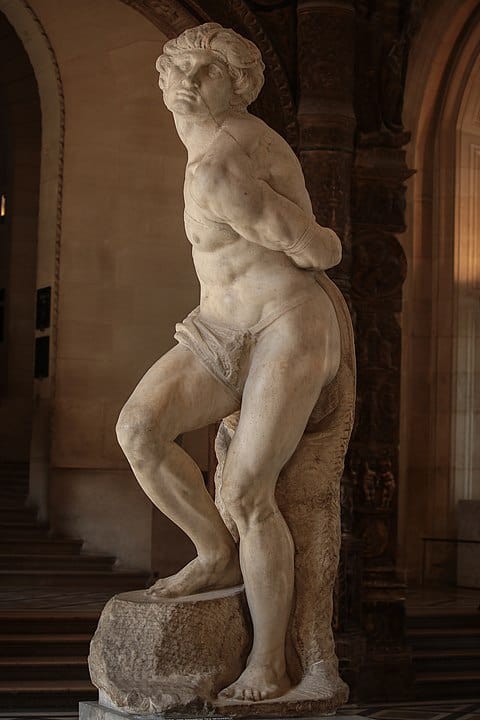
2. Tresor – Eva Breitfuß
“I created Trésor 2022 after experiencing a period of uncertainty and ‘not knowing’. This was a deeper call to more authentic Being. Trésor from French for treasure is the treasure of unconditional trust in yourself, the opposite of doubt. I believe we all have unlimited potentials. We are consciousness with the capacity to open to and create from the vast space of awareness. This is difficult to talk about because words and language themselves are limiting. Things started to shift when I allowed myself to be truly vulnerable, to sit with the discomfort and allow it all. It is a very tender place of being with the Unknown.”
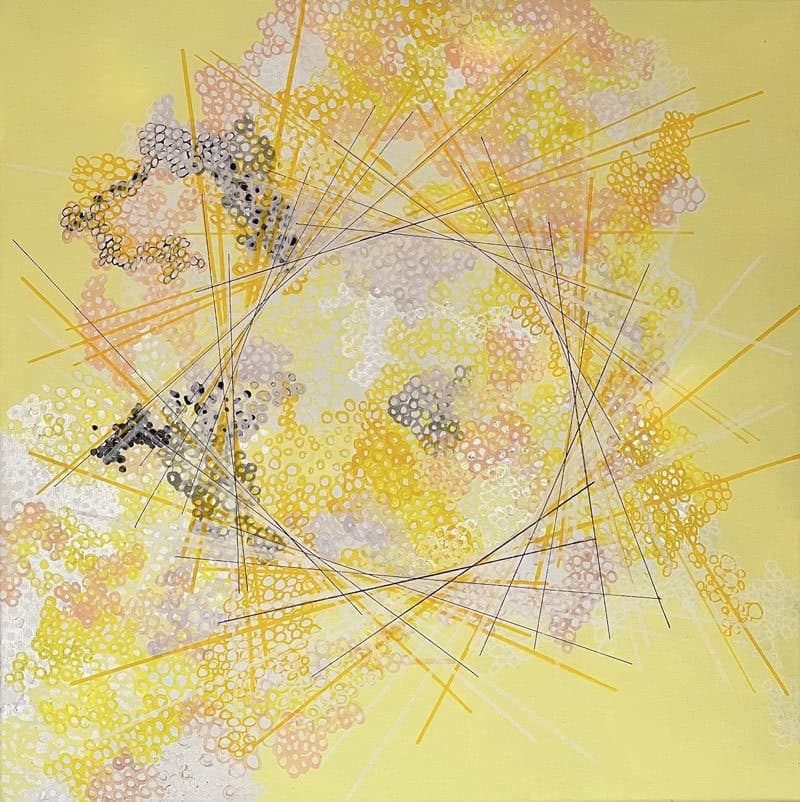
[Source: Tresor – Eva Breitfuß]
Now, let’s see some of the artist statement templates.
Artist Statement – Abstract Painter
My work explores the tension between structure and spontaneity. Through layered brushstrokes, unexpected color relationships, and gestural mark-making, I aim to capture fleeting emotions and the energy of the moment. I work primarily with acrylic and mixed media on large-scale canvases, allowing me to build depth and movement through texture.
Rather than depicting specific scenes, I create compositions that invite interpretation. Some viewers see landscapes, others feel the presence of figures or shifting light. This ambiguity is intentional—I want my paintings to serve as mirrors, reflecting the emotions and memories each person brings to them. My influences range from the intuitive methods of Abstract Expressionism to the controlled chaos found in natural patterns. Ultimately, my work is about finding balance—between control and surrender, form and fluidity, silence and intensity.
Artist Statement – Conceptual Photographer
I use photography to examine the intersection of identity, memory, and environment. My images often blur the line between reality and fiction, using staged elements, long exposures, and digital manipulation to create dreamlike compositions. I am drawn to liminal spaces—abandoned buildings, fog-covered landscapes, or dimly lit interiors—because they evoke a sense of transition and the unknown.
Each series I create is rooted in a specific question. How do our surroundings shape our sense of self? What does it mean to belong to a place, or to feel like an outsider? I am influenced by cinematic storytelling, surrealism, and personal narratives, using my camera as a tool to construct scenes rather than merely document them. My goal is not to provide answers but to encourage contemplation, inviting viewers to find their own meaning in the images.
In a time when AI-generated images can mimic artistic photography, distinguishing human creativity from machine-made visuals is more important than ever. AI Image Detector provide a way to verify authenticity, ensuring that photography remains a medium of personal expression rather than algorithmic replication.
Artist Statement – Digital/AI Artist
My work exists at the intersection of art and technology, where human creativity meets machine intelligence. Using generative algorithms, neural networks, and digital painting techniques, I create pieces that challenge traditional ideas of authorship and process. I see AI as a collaborator rather than a tool—an unpredictable partner that brings unexpected elements into my compositions.
Themes of transformation, glitch aesthetics, and the relationship between organic and artificial forms run throughout my work. I am fascinated by how technology alters perception, memory, and the creative process itself. While the outputs are digital, my approach is deeply hands-on, with continuous iteration and intervention shaping each piece. I want my work to raise questions about the evolving role of artists in an age of automation—what does it mean to create when machines can also generate?
Common Mistakes to Avoid in an Artist Statement
If the artist statement is too vague, it says nothing. If it’s too wordy, it loses impact.
But many artists fall into the same traps that make their statements weaker.
Here are some common mistakes to watch out for:
- Overloading with Jargon – Fancy words don’t make a statement more impressive. They make it harder to understand. Avoid academic or theoretical language unless it’s genuinely part of your artistic process.
- Being Too Vague – Saying your work is “about the human experience” or “exploring emotions” doesn’t tell the reader anything specific. Pinpoint what makes your work unique.
- Making It Too Long – An artist statement should be concise, ideally between 100 and 300 words, just like our artist statement examples. Anything longer risks losing the reader’s attention.
- Describing Instead of Explaining – Don’t just list the materials you use—explain why you use them and how they connect to your artistic vision.
- Trying to Sound Like Someone Else – Your statement should reflect your own voice, not what you think galleries or curators want to hear. Authenticity is key.
- Avoiding Clarity – If a reader has to decode what you mean, they won’t connect with your work. Keep your language simple and direct.
- Forgetting to Proofread – Spelling mistakes, grammar errors, and awkward phrasing can make your statement look careless. Read it aloud, edit, and have someone else check it before finalizing.
Final Thoughts
Writing an artist statement that feels perfect is challenging. But, like any part of your practice, it gets easier with time.
All it takes is putting your artistic vision into words in a way that feels natural and true to you.
If you ever need help refining your statement or checking its clarity, Undetectable AI’s tools are here to assist.
Sign up and get started today.
